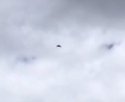China's J-20 stealth fighter is being tested in the mountains close to the Indian border, but the new technology is intended for deployment in the Western Pacific, military expert Vasiliy Kashin told Sputnik.
Last week China's new fifth-generation Chengdu J-20 stealth fighter jet was spotted in the mountains of the Tibetan Autonomous Prefecture, close to the border with India.
The
came after China's defense ministry warned India against deploying its supersonic BrahMos missile in the same region, and some analysts saw China's move as a response to India's deployment.
However, military expert Vasiliy Kashin told Sputnik that testing military equipment at high altitude has become a priority for the Chinese armed forces, regardless of where the technology is eventually deployed.
is able to ensure the necessary balance of power because it has purchased Russia's S-400 anti-aircraft missile systems, modernized Sukhoi Su-30MKI fighter jets and is collaborating with Russia on the Sukhoi/HAL
aircraft (FGFA/PAK FA) joint project."
While the testing has taken place in the mountains of Western China, deployment of the new stealth technology is more likely in the Western Pacific Ocean, Kashin said.
"The Chinese air force there already faces US F-22 and
stealth fighters, furthermore the latter will be used by America's regional allies like Japan and Australia."
The J-20 plane is a twin engine fighter with stealth features which enable it to sometimes go undetected by radar unlike other fighter jets.
In July aviation magazine
that China’s Chengdu Aircraft Company (CAC) has built two of the aircraft, following two prototypes and six known development aircraft that featured a successive series of refinements.
According to a recent report by
, production is slated at two fighters per month and at this rate, China may be able to deploy 36 J-20 fighters by early 2018.
This story first appeared on
& is reposted here with permission.








